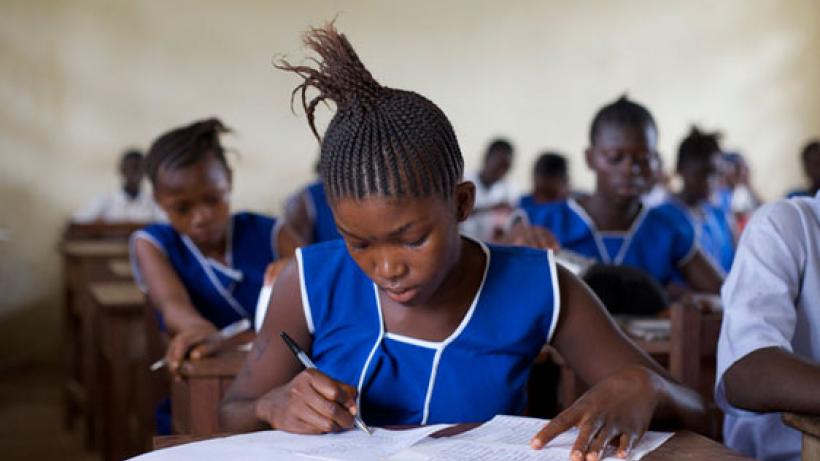
Bride and prejudice: The price of education
Leveraging the cultural practice of bride price could help amplify investments in female education and improve effects of large-scale school-building programmes. Without other subsidies, well-intentioned activism against bride-price may cause more harm than good for investing in girls’ education.
Bride price, a common custom in parts of sub-Saharan Africa and Asia, including Indonesia, is a payment by the groom to the family of the bride at the time of marriage. Bride price payments (referred to as Lobola in parts of Sub-Saharan Africa) are substantial: in Indonesia, the mean bride price payment among ethnic groups that traditionally practice bride price is 51% of GDP per capita and in Zambia, it is 175%.
Policy and practice: Cultural context can shape policy responses
Large-scale development policies are seldom tailored to the cultural context of specific countries. However, in recent years, policy practitioners and researchers alike have begun to understand that development policies and cultural practices can interact in important ways. This insight has important implications both for choosing what policies to enact in different countries and for applying the estimated effects of a policy in one cultural context to another context.
Many activists view bride price as repugnant, akin to the buying and selling of women. There have even been calls to ban bride price. However, when we discussed bride price customs with parents in Zambia, we learned that parents often view bride price as a compensation for investments in their daughters and as a substitute for the old age support that daughters can no longer provide if they leave the household to marry.
In a recent working paper, Bride Price and Female Education, we study one such case where the effectiveness of a large-scale development policy depended on cultural norms. We revisit the Sekolah Dasar INPRES school construction programme, during which the Indonesian government built 61,000 primary schools between 1973 and 1978. In an influential paper, Esther Duflo estimated the effects of this school construction on male education. Duflo found that boys who were young enough to fully benefit from the programme received 0.12-0.19 more years of education for every additional school per 1,000 children.
Effects of school construction may vary depending on practices of bride price
However, other work suggests that girls’ education did not respond much to the school construction programme. In our research, we find that this low average effect of school construction on education masks large effects for some ethnic groups. In particular, we examine how the effects of school construction vary with whether an ethnic group traditionally practices bride price.
The construction of primary schools increases primary enrollment for girls from ethnic groups with a bride price tradition but not for girls from other groups.
For example, in focus groups, one of our respondents told us, “A girl child is business, and we all need money” and, “For girl children, you benefit from charging while with boys support comes from them when you are old.” Moreover, bride price negotiators know what factors increase bride prices. In a focus group, one told us: “Lobola is up with level of education because the family knows that the husband and his household will be beneficiaries.” Conversations with these parents suggest that bride price increases with female education and that Zambian parents are very aware of this connection. Indeed, in Zambia we find that completing primary education is associated with 22-37% higher bride prices and in Indonesia, completing primary school is associated with 43-66% higher bride prices.
If bride price increases with education and parents are aware of this fact, bride price may incentivise parents to invest more in their daughters’ education, since there will be higher returns to doing so. Therefore, parents of daughters in ethnic groups with bride price traditions may be more likely to take advantage of the new educational opportunities made available by school construction programmes.
We estimate the effects of the INPRES school construction programme separately for girls who are from these bride price groups and those who are not. We find that girls from bride price ethnic groups do respond strongly to the school construction. One additional school per 1,000 students increases the probability that a female from a bride price ethnic group will complete her primary schooling by 2.6 percentage points. In contrast, we cannot reject the possibility that the school construction had no effect on non-bride price girls’ education.
This finding is not unique to Indonesia. We do a similar analysis in Zambia, estimating the effects of the more recent construction of 5,649 schools in the 1990s and early 2000s. Even though Zambia and Indonesia are very different countries – Zambia is predominately Christian and Indonesia is predominately Muslim -- our results are strikingly similar. The construction of primary schools increases primary enrollment for girls from ethnic groups with a bride price tradition but not for girls from other groups.

Using cultural motivators to inform more effective policies
If we had ignored this heterogeneity in the effect of school construction on girls’ education, we would have falsely concluded that school construction programmes are not effective at increasing girls’ education. Instead, we find that girls respond to school construction by becoming more educated – when parents have incentives to value female education more highly.
Our findings suggest that if policymakers want to choose effective policies for economic development, then they have to consider how these policies will interact with cultural traditions. Bride price is not the only cultural tradition that could be important – dowry, inheritance customs, and the historical role of women in agriculture, among many others, may affect how individuals in low-income countries respond to different policies.
Our findings also suggest that policies like banning bride price could have unintended negative consequences. While some activists may find bride price morally repugnant, bride price incentivises parents to educate their daughters. In recent censuses, school-aged Indonesian girls from bride price ethnic groups were 4-6 percentage points more likely to be enrolled in school. So, in the absence of other subsidies for girls’ education, well-intentioned policies to discourage bride price could ultimately reduce female educational attainment.

